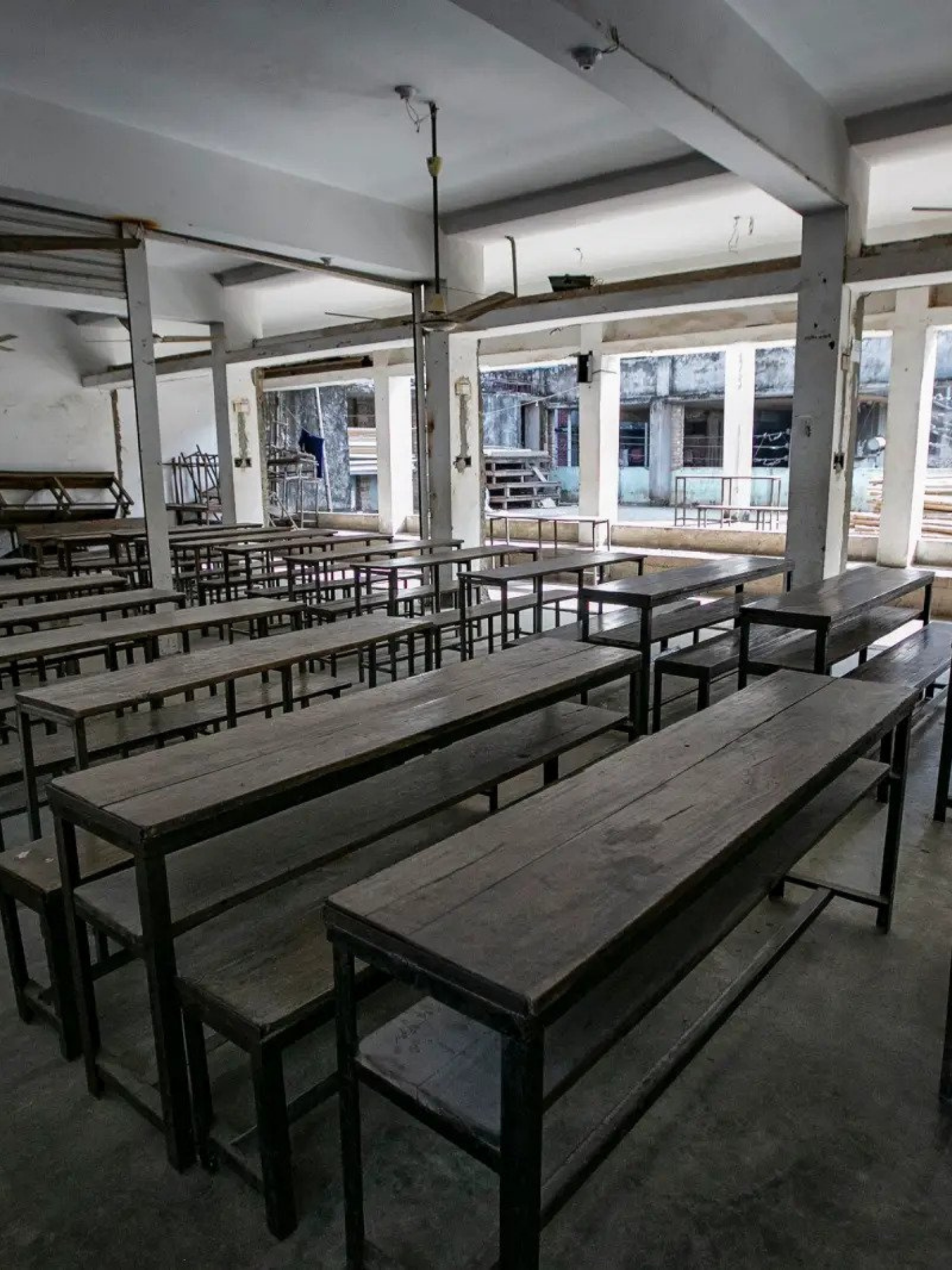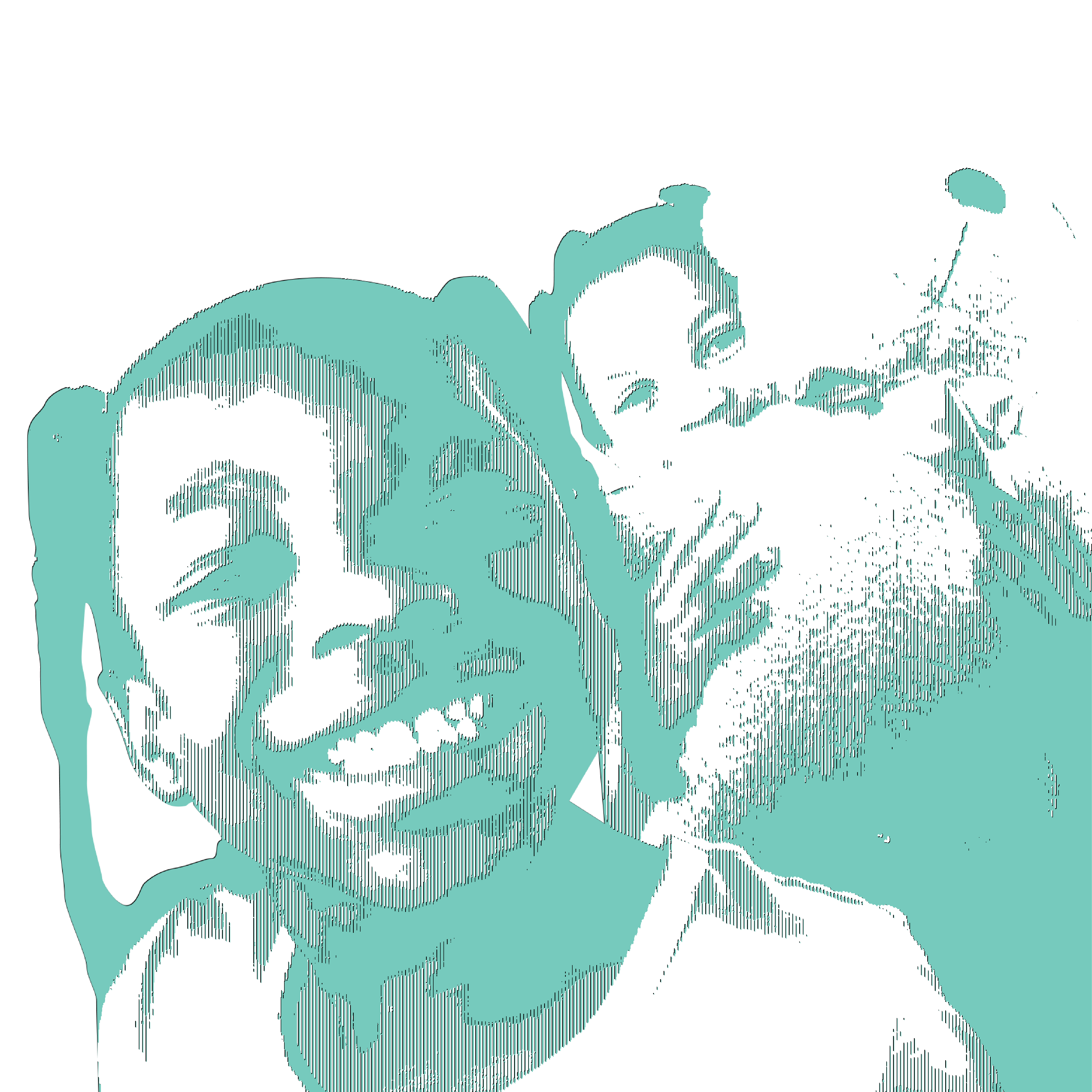
Of the seven pairs of sandals discarded by the garment factory entrance, two pairs sit smaller than the rest. Kicked off this morning, their leather is already coated in cotton dust—lint balled up by the toes. On the other side of the workshop, men with damp foreheads press the soles of their feet against the pedals of industrial sewing machines and make the floor shake.
Quiet among the chaos, the smallest sandal owners perch on plastic stools and snip at turquoise T-shirts. Their sewing shears gleam, blades bigger than the hands that hold them.

As a nonprofit journalism organization, we depend on your support to fund more than 170 reporting projects every year on critical global and local issues. Donate any amount today to become a Pulitzer Center Champion and receive exclusive benefits!
At 13 years old, Kamran is one of the youngest employees on site. More than 18 months have passed since he started working in the garment factory in Narayanganj, and he’s desperate not to disappoint. Three generations of his family are relying on him—to pay their rent and buy their food and settle their debts.
He grips his scissors tightly and trims a strand of loose thread, before adding the fabric to a pile. If his family’s situation worsens, he’s not sure what they'll do.
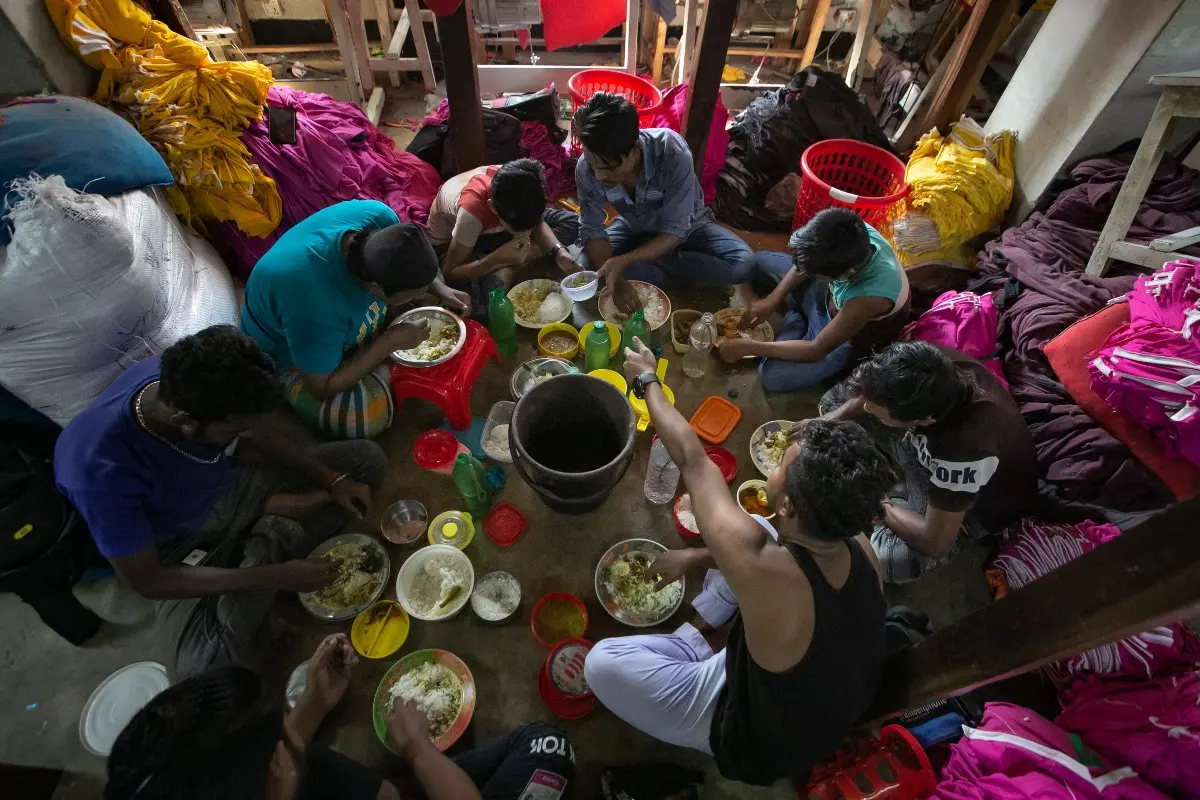
This wasn’t the way Kamran’s story was supposed to go. His future was written and wrapped up with hope—until an otherwise normal weekday morning in March 2020, when one of the nextdoor neighbours told his grandmother that a virus was spreading, and the school down the road had suddenly closed. (As a victim of child exploitation, Dhaka Tribune is only using Kamran’s first name to shield his identity.)
Back then, when everyone thought the pandemic would pass within a few weeks, Kamran remembers feeling happy at the news. He enjoyed school, but he was excited to have more time to play hide and seek in the village where he lived with his grandmother and seven-year-old sister, Hazera. But as the months rolled by, his classroom stayed empty. Sometimes, at his grandmother’s insistence, Kamran opened one of his textbooks and considered the exercises inside. The inclination was typically short-lived.
Still, Kamran could sense the adults around him becoming increasingly stressed. In April, his mother had turned up in the village, bags in tow. For the previous four years, Shakila had worked in a garment factory in Narayanganj, but now international buyers were cancelling their orders from Bangladesh en masse, and the million-billion dollar textile industry was shuddering to a close. Kamran’s father had left when Hazera was born—angry at Shakila for failing to deliver him a second son—so Kamran’s family found themselves without an income. Kamran’s grandmother borrowed money to buy food, but their portions of rice started to shrink. Some days there weren’t any vegetables at all.
By the time the garment factories reopened that summer, Shakila was thin and had developed a cough. Upon returning to Narayanganj, she struggled to hold down a job. When she asked her 12-year-old son if he would be willing to stop playing and start working instead, Kamran understood it was very important that he said yes.
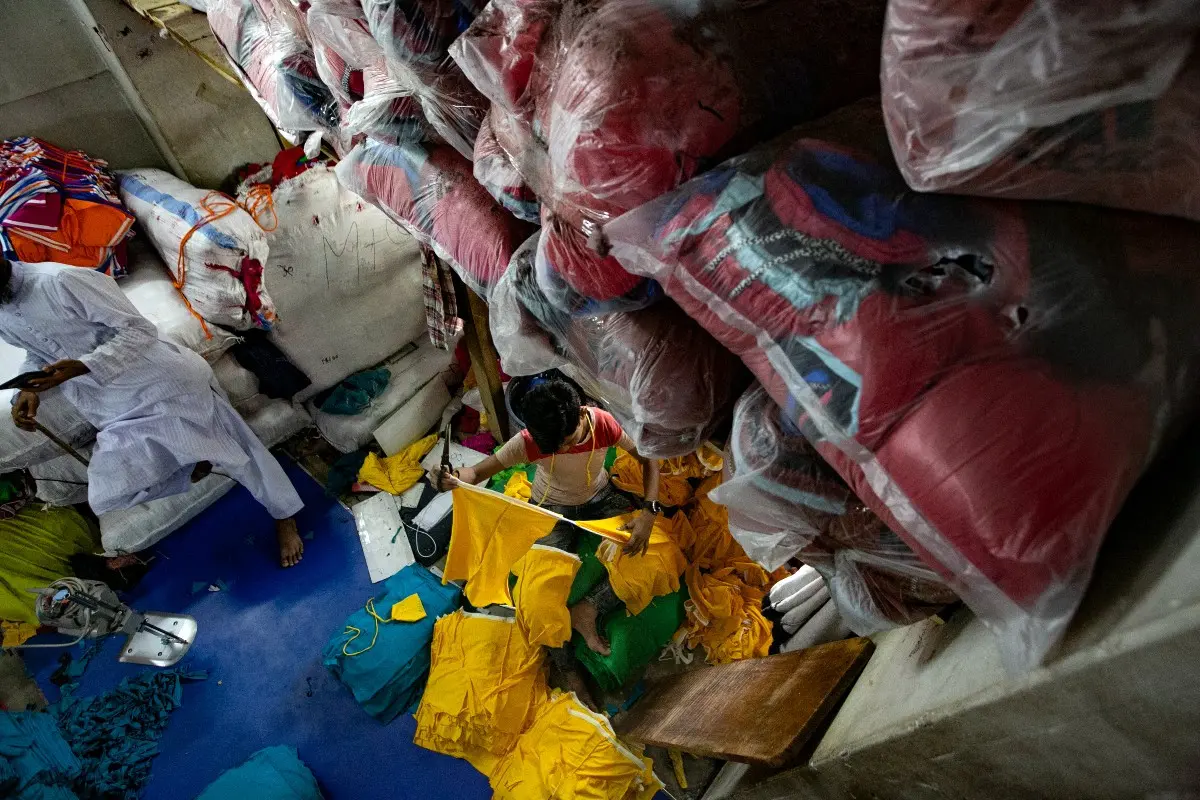
Child rights groups across Bangladesh say that it’s impossible to track how many children started working during the pandemic, though they estimate it must be in the hundreds of thousands. The total would likely be less, they say, had Bangladesh’s schools not remained consistently closed for 18 months: one of the longest and most controversial academic lockdowns in the world. Already, national data reveals at least 1.4 million children dropped out of school between 2020 and 2021. What has happened to them since remains largely unknown.
Now, nearly twelve months after classes finally resumed, advocacy organizations say their once tentative hope of primary and secondary school drop-outs returning to their classrooms is beginning to fade. Families across the country are struggling against the stretch of inflation, while a near total lack of social support from the government means that child exploitation often represents the only way parents can meet their rising costs.
“People are suffering,” says Tuomo Poutiainen, Bangladesh director for the International Labour Organization. “Inflation is high, the cost of food and living is getting high. There's a perverse incentive for parents to keep children working.”
From next year, it will be illegal for any child under the age of 14 to work in any industry in Bangladesh, following the government’s recent decision to ratify the International Labour Organization's convention on child labour. But critics argue it’s not enough, and are urging the authorities to look closer at the systematic issues that have forced so many children out of the classroom and into the workplace over the past two years.
“The root cause is definitely poverty,” said one senior-level employee at an international non-profit organization, who declined to be named for fear of professional repercussions. “We need to be more open about these problems and come up with innovative solutions. But [the government] doesn’t want to recognize this.”
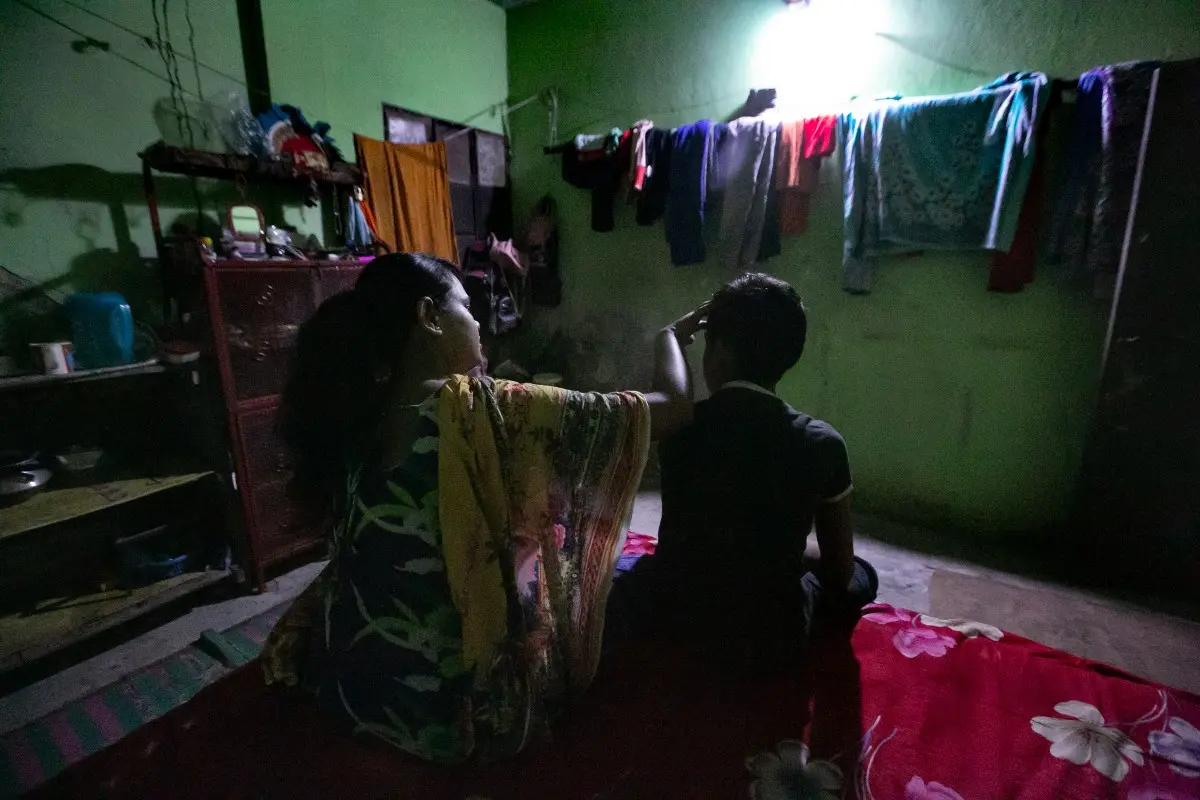
As the scale of the pandemic’s economic fallout becomes increasingly apparent, opportunities for children like Kamran to escape exploitation continue to shrink. According to Poutiainen, the longer a child is deprived of an education, the less likely it is that he or she will ever return to class. “Child labour amputates your opportunities in life,” he says. “You become very limited very quickly, meaning a poor child labourer will become a poor adult labourer too. We have to break that cycle.”
In Kamran’s case, the shift from school pupil to child labourer took a couple of days. Following a bumpy bus ride across the country to Narayanganj, Shakila found her son a job in a small, chaotic workshop that produced counterfeit Adidas tracksuits and soft cotton vests. Here, surrounded by pulsing machinery, Kamran learned he could earn Tk4,000 a month to snip threads and sweep floors for 11 hours a day. He also learned that nobody cared about his age. Each week, he handed his salary straight to his mother, who used the money to rent a small, windowless room near the river, and begin paying back the family’s steadily climbing debts.
Ten months later, his school finally reopened its doors. But Kamran’s desk remained empty. When a neighbour asked his grandmother if they could buy the boy’s uniform, she handed it over without asking him first.
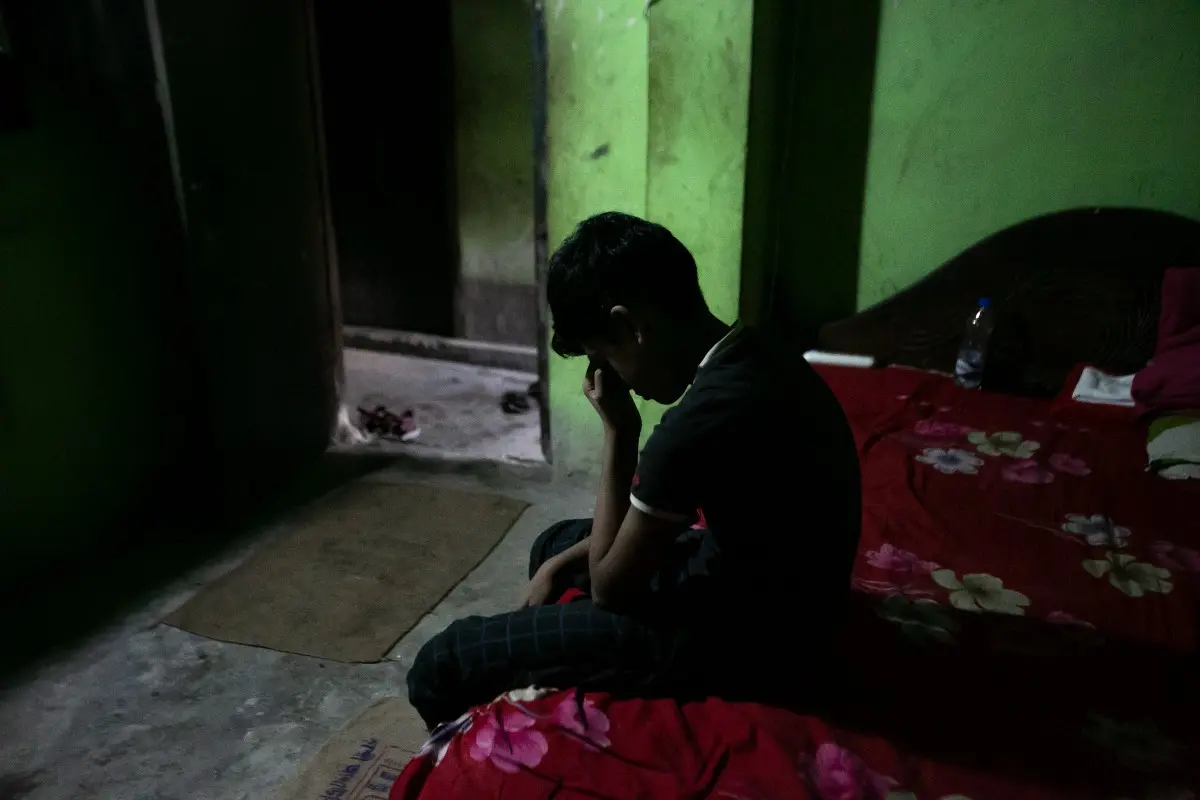
Kamran never complained about the sharp, sudden turn his life had taken, though Shakila noticed her son was becoming quieter. He had always been polite, but that had never stopped him from playing with his friends or squabbling with his younger sister. Now the 11-year-old stuck to his mother’s side like the pieces of cotton fluff she found herself picking off his T-shirts at night. Every evening, he returned directly from the factory to help Shakila prepare dinner, before falling into an exhausted sleep beside her on their shared single bed. Sometimes, hours could pass and he wouldn’t say a single word.
Shakila didn’t need her son to talk about how he was feeling. She already understood. When she was nine years old, her own parents had decided to end her education and send her to work as a maid instead. By the time her 14th birthday arrived, she was married to a man nearly twice her age. One year later, she gave birth to Kamran and Shakila made a promise to herself that he would finish high school and get a good job—even if it meant she had to move hundreds of miles away from her family to afford the fees. It hadn’t been easy, but until the pandemic arrived, Shakila had managed to stick to her word.
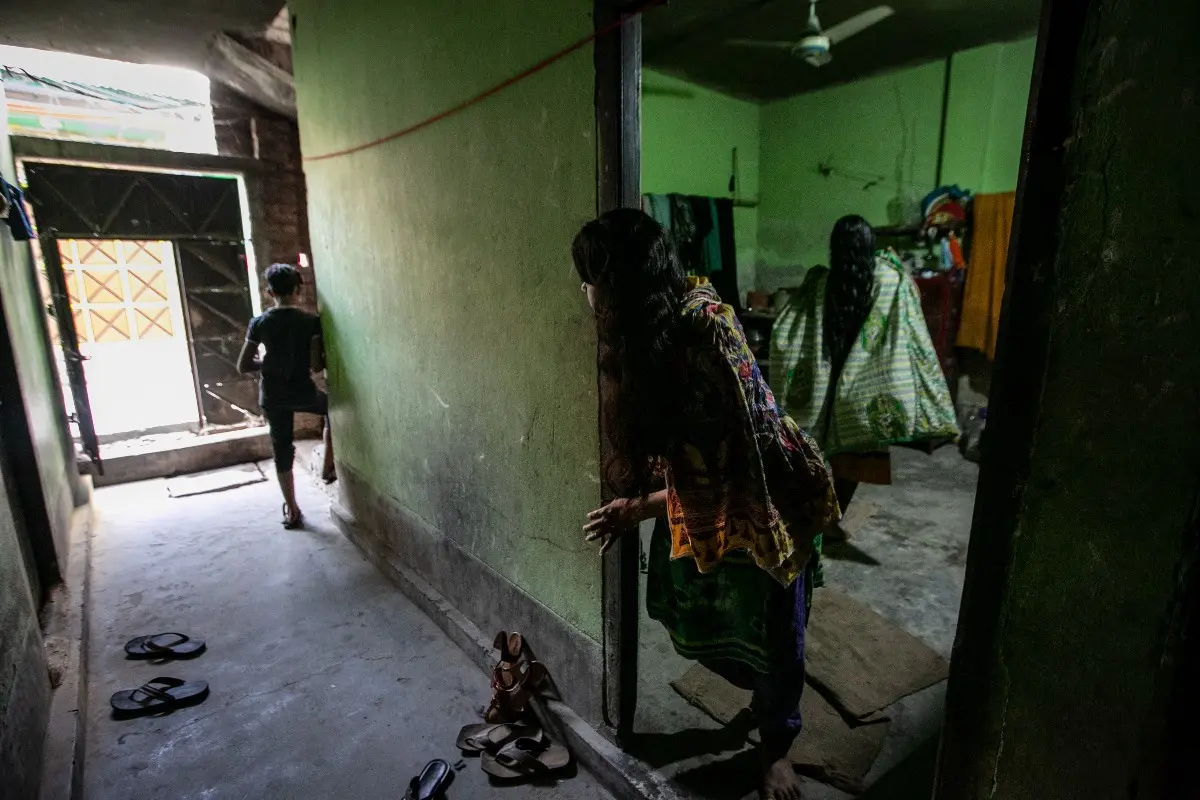
Now, more than two years after the coronavirus had shuttered schools across Bangladesh, Shakila felt like everything was falling apart. Even with Kamran’s income bolstering her own, she worried about being able to pay the Tk2,500 they needed for rent each month. The cost of living was continuing to soar, and she was struggling to afford the medication she needed to get out of bed.
On visits back to the village, Shakila watched Hazera as she did her homework. It dawned on her that her nine-year-old daughter was the family’s last hope.
In his dusty workshop in Narayanganj, Mohammad sits cross-legged on a bag of fabric and surveys his team. Half a dozen men are hunched over their sewing machines, fingers flying as they hem T-shirts and tank tops before tossing them onto piles beside their feet. When each item is finished, Kamran snips it free of any loose threads. He grips his sewing shears tightly, careful and precise.
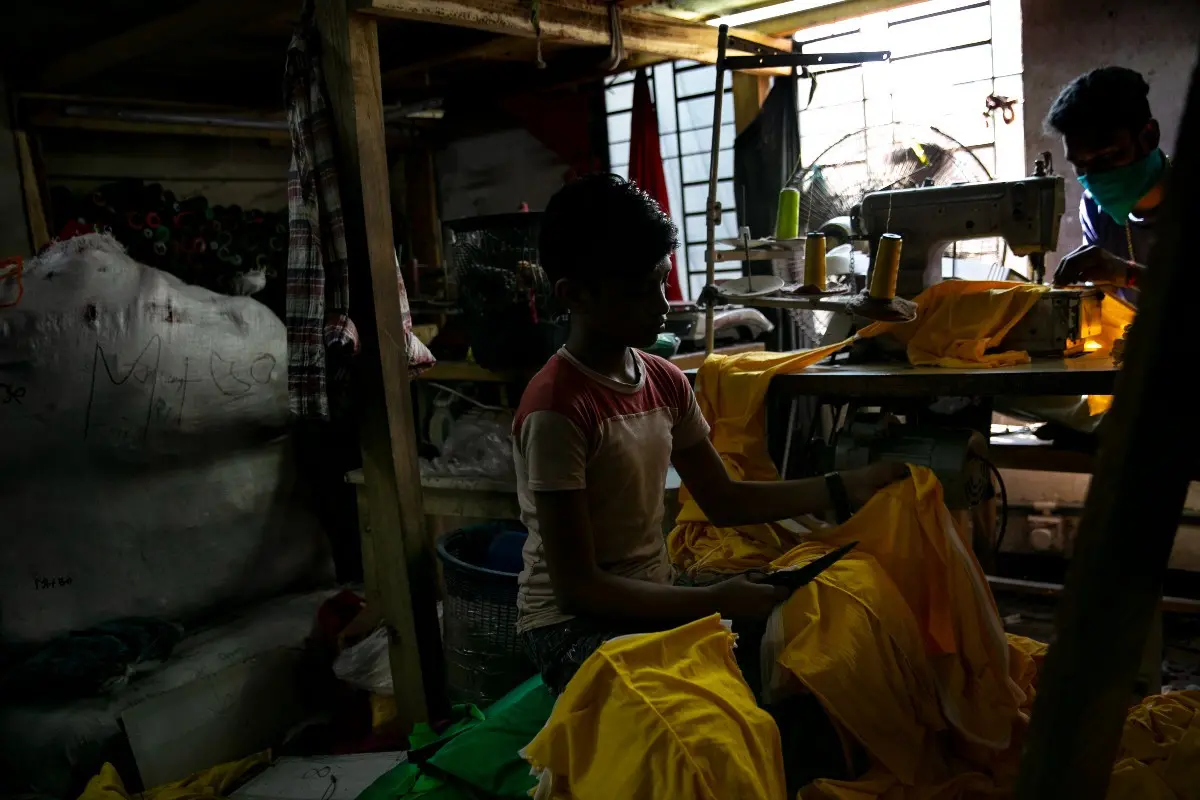
Ever since opening his business 14 years ago, Mohammad has relied on children to keep it running. It’s not just because they’re cheaper, he insists, though he pays Kamran Tk1,000 less than he has paid adults doing the same job in the past. Instead, he believes he’s providing crucial social support where the government is failing. While state subsidies exist to help girls complete secondary school, no such funding exists for boys. In 2015, the Ministry of Finance announced plans to invest 20% of the total national budget in child development by 2020. Yet in June, the Centre for Policy Dialogue confirmed the government is still billions of dollars off meeting its goal.
Mohammad knows that employing Kamran is a form of child exploitation, but he isn’t concerned about getting caught. As a condition of Bangladesh’s agreement with the International Labour Organization to eliminate child labour by 2025, in June the Ministry of Labour and Employment announced plans to create a digital database of 300,000 workers across the country, detailing personal information, including their ages. But Mohammad doesn’t expect auditors to show up at his door: nobody has ever inspected his factory so far, and he can’t imagine them starting anytime soon. “[The government] knows we’re helping where they can’t,” he says.
Other business owners across the country agree. In Dhaka, Manaur owns a glass factory, where two small boys operate heavy-duty machinery and sometimes injure themselves in the process. Children make poor employees, he says, explaining that he spends a good portion of each day shouting at them to stop playing and focus on each task in hand. “I tell their parents that their sons should be in school instead, but they say it is not possible because they are too poor,” he says. “They need help, so what can I do?” His youngest assistant, Rafi, is 12.
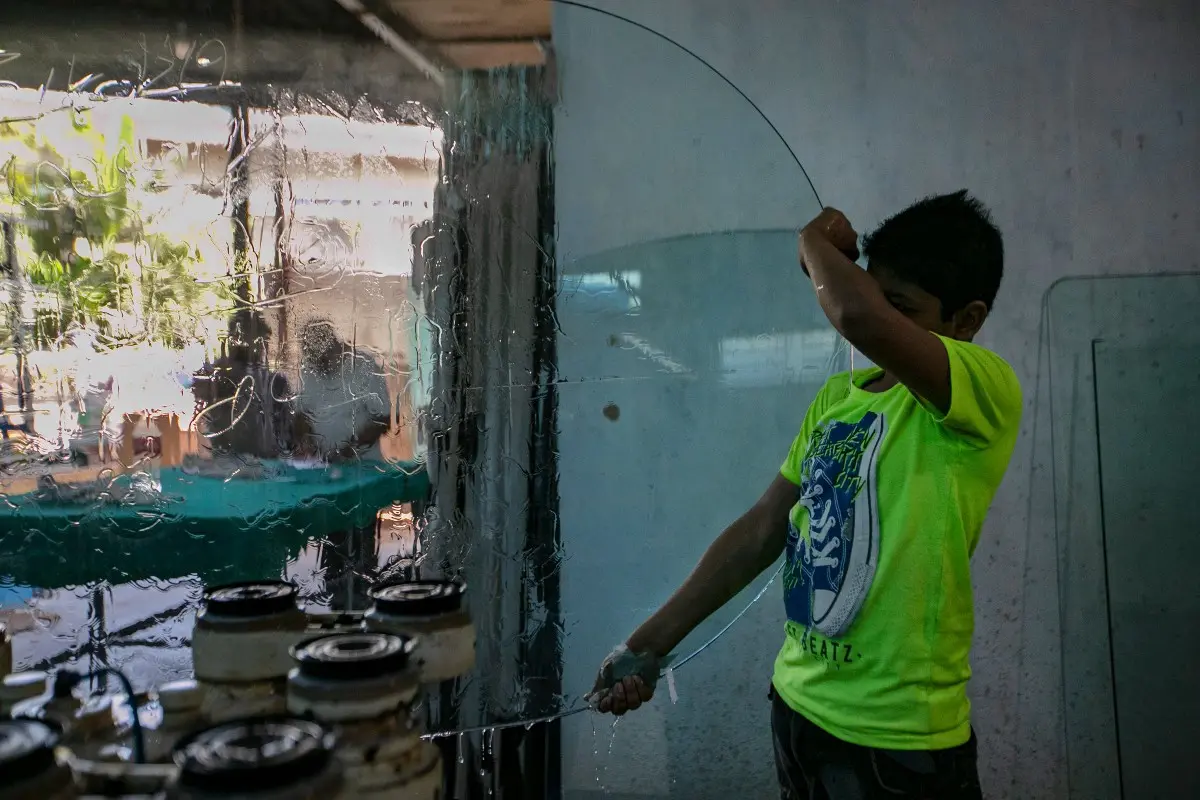
As inflation rises, both Manaur and Mohammad say they have seen increasing numbers of parents turn up at neighbouring factories with their kids, some as young as six years old. Clutching oversized brooms, they sweep the floors of dust and fluff, before falling asleep on piles of T-shirts as the sky darkens outside. It feels to Mohammad as if Bangladesh’s small businesses are providing a sort of informal childcare—the only option for parents who can’t afford the country’s prohibitively expensive school system, but who need to continue working themselves.
Speaking over the phone in April, Poutiainen said he wasn’t surprised to hear business owners consider themselves the children’s saviours. The situation is complex, he said. Until education in Bangladesh is free and compulsory until at least age 14, he doesn’t see how child labour will ever stop. “Investments in addressing loss of learning and getting children back to school must be pursued,” he added during a later exchange. “This situation needs to be considered and addressed with highest priority.”
For the first 12 months he spent working in Mohammad’s workshop, Kamran believed he would eventually be allowed to go back to school. If he worked hard and earned enough money, he thought, perhaps he could buy himself a new uniform and pay his own school fees. In December 2021, as the academic year drew to a close, he allowed himself the nervous hope that his mother could afford for him to resume his studies in January.
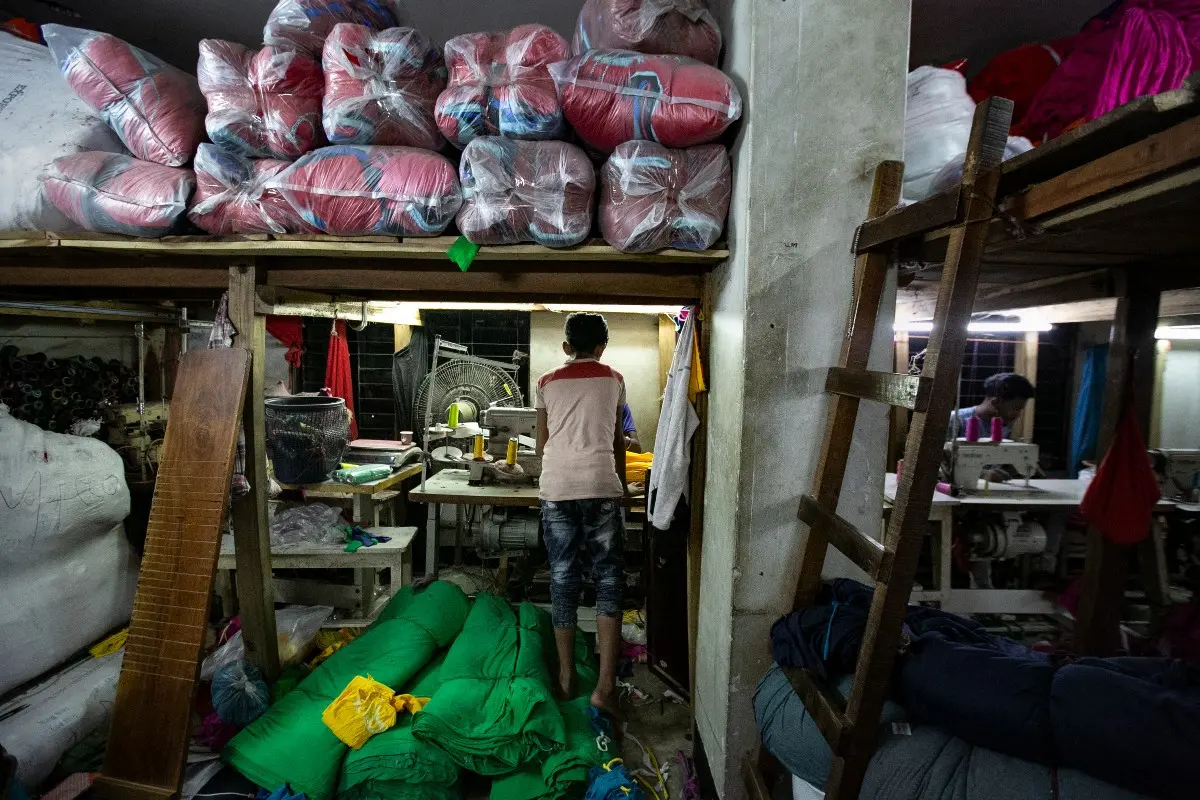
But January came and went, and Kamran continued working. Shakila was sick and kept losing her job. With the family relying on his income, the 13 year old watched as his future shrank further until it fit inside the factory’s four walls. No matter how many floors he swept or hours he worked, the price of rice continued to rise. By May, the family was flailing, and Shakila knew what she needed to do.
What happened next is hard for Kamran to talk about. As he perches on his plastic stool, he grips his scissors tightly and trims a strand of loose thread. Then he passes the fabric to Hazera, and his little sister adds it to the pile.
Corinne Redfern is an investigative journalist based in Milan, Italy.
Ali Ahsan is an award-winning journalist and filmmaker based in Dhaka, Bangladesh.
Allison Joyce is a photojournalist based in North Carolina.




